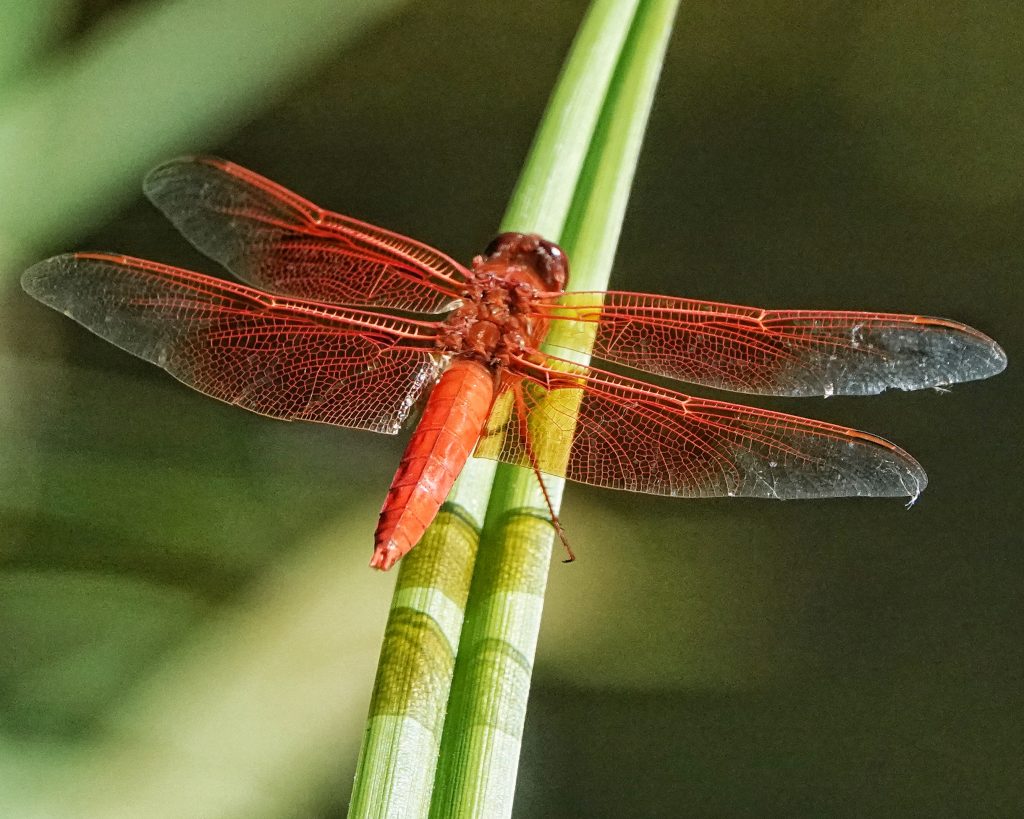
I finally found a Flame Skimmer! I must admit that when I first started looking for them ten years ago I was more concerned with finding the first one in Washington state than in simply finding one, and I didn’t explore some of the very good options just across the Columbia River in Oregon. But, because of their proximity, and since they’d been moving steadily northward (in 1983 their northernmost outpost was in Albany, Oregon, but by 2012 they were established in several locations in the Portland Metro area [Johnson; 2017]), I figured that that time was better spent checking off the species for a whole state rather than a personal list.
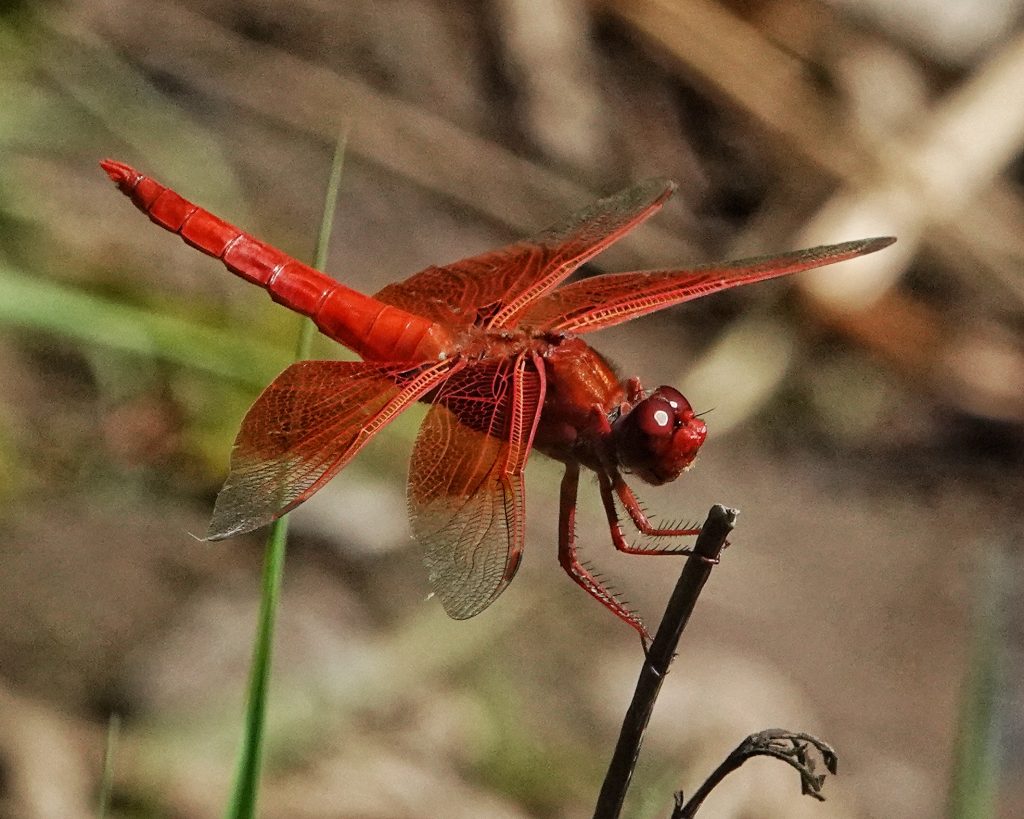
Then, on September 14, 2016, Jim Johnson, one of my dragonfly mentors, found the first state record at Klineline ponds in Vancouver, Clark County, Washington. I was somewhat disappointed for myself, but happy for Jim, a real expert who deserved that find. I made a few trips to the pond over the next few years, but was never able to duplicate his find (although I saw that he had), and then other interests intervened, and I kind of forgot about it.
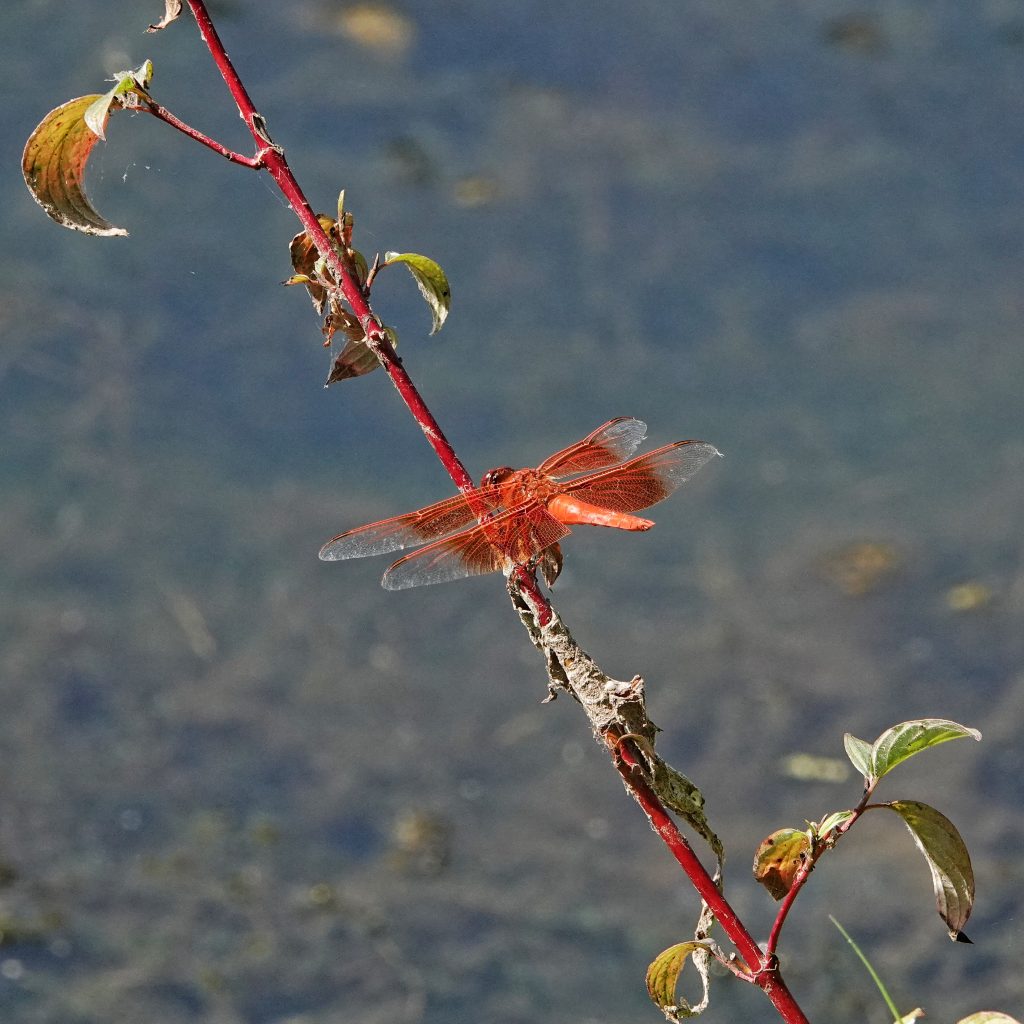
But recently I started thinking about them again, and on Tuesday I took a trip out there. And I found two of these spectacular, boldly colored (so red even I can see it!), beautiful dragonflies patrolling one of the ponds! Unfortunately I didn’t manage a photo, and because they weren’t doing much perching I attempted to net one, but only succeeded in spooking both. So, thinking maybe they’d be calmer when it was cooler (although I’ve now found out they are most sedentary in the late afternoon), I headed back out on Thursday morning.
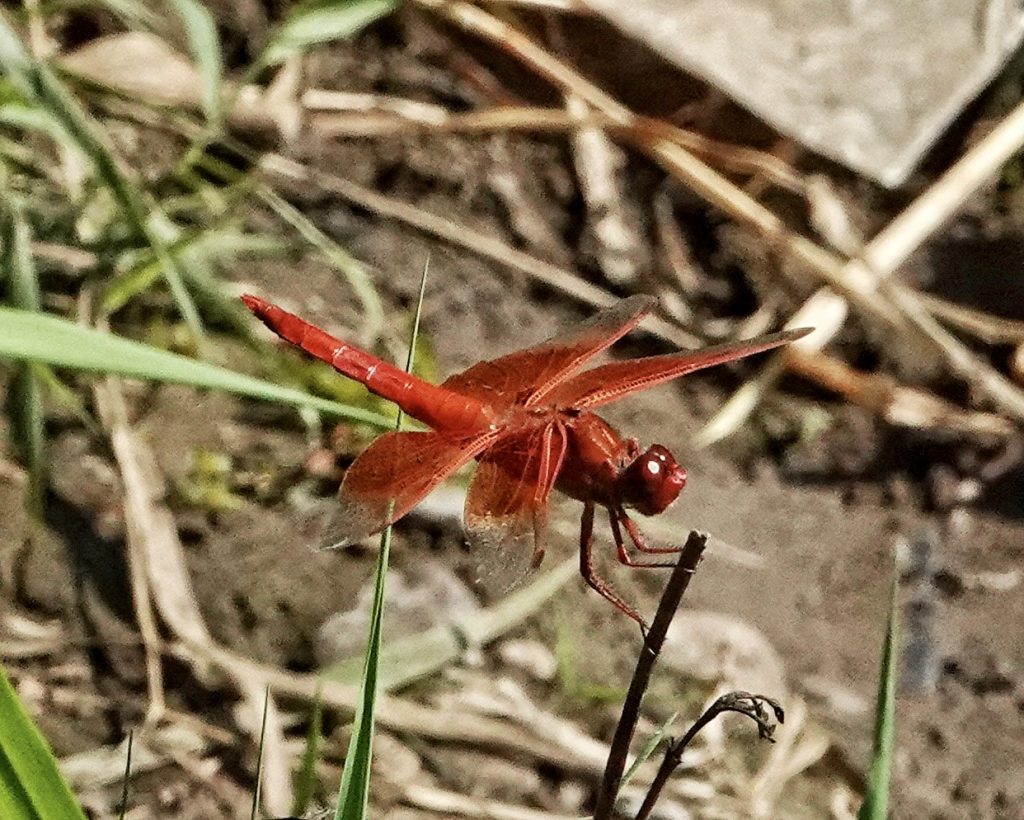
And almost immediately found one perched on some pond side vegetation. I struggled for awhile to get my camera focus to pick him out of the background, sure he’d fly at any second, but he hung out and I got plenty of photos. That was the first of at least ten (but possibly many more because they are extremely difficult to keep track of in flight) that I saw that day, many of whom were perched conveniently for their portrait. Despite the fact that all of them that I positively identified were male (there was a brief glimpse of one that may have been female, but it rocketed off a perch on the edge of the woodland before I got a good look), the sheer numbers argue for them having been successfully breeding in the pond.
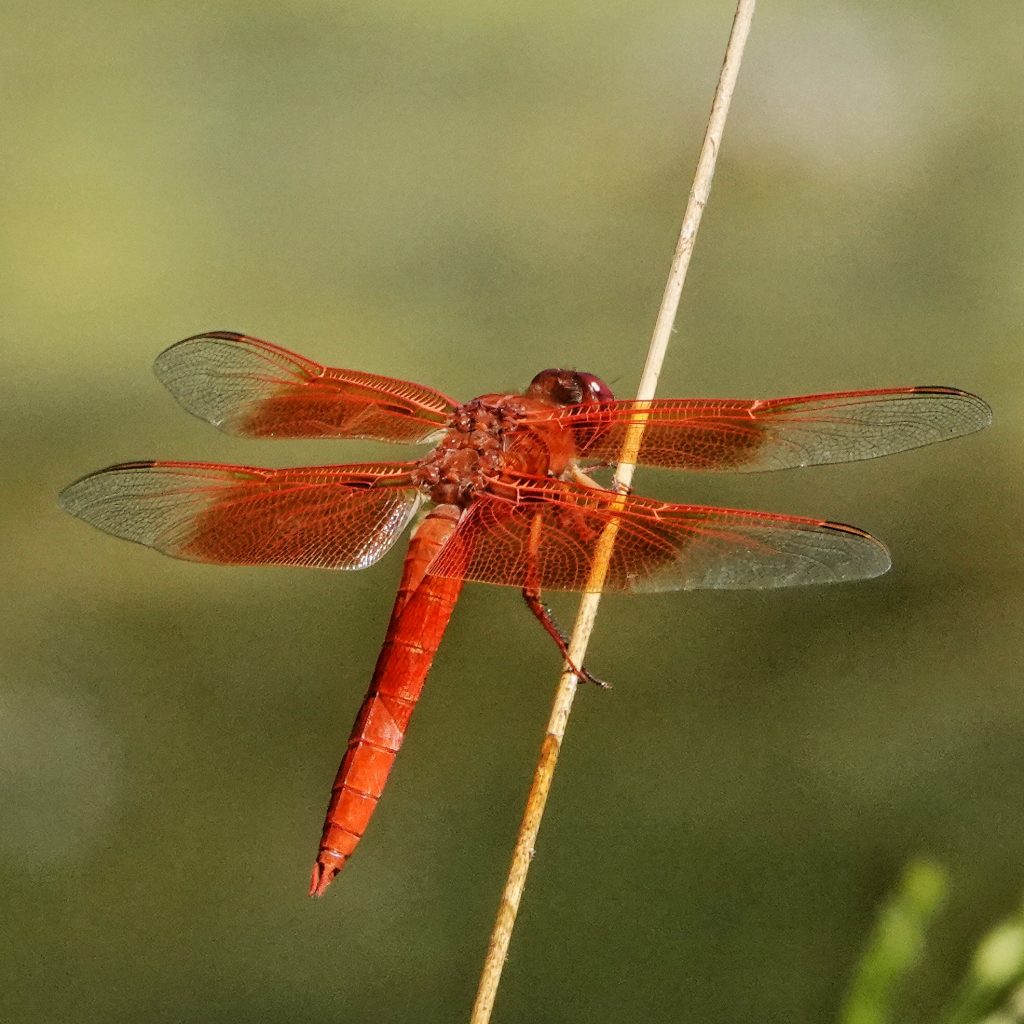
Males of this species will defend a territory from a perch, as well as make patrolling flights looking for receptive females. There are hypotheses as to how they may choose between defending or patrolling, but they didn’t bear up to the data in this study (SJ DeBano; 1993). When their territory is invaded they sally after the intruder. Alcock (1988) says they fly “with them in ascending flights along the stream.” What I saw a lot of on Thursday were parallel flights where the defender was closer to the original perch, which is also the behavior Dennis Paulson mentions in ‘Dragonflies and Damselflies of the West (2009). Regardless, only one male returns to the perching site.

Some sources say that males do not guard females as they oviposit, but what usually happens (SJ DeBano; 1993) is that immediately after copulation (which takes place in flight and lasts about 10 seconds) the male does guard the female as she oviposits, but 43% of the time he is unsuccessful, and so she flees the ruckus and returns later to oviposit. Where she is again usually accosted by males attempting to mate with her, to whom she is usually receptive, and on it goes.
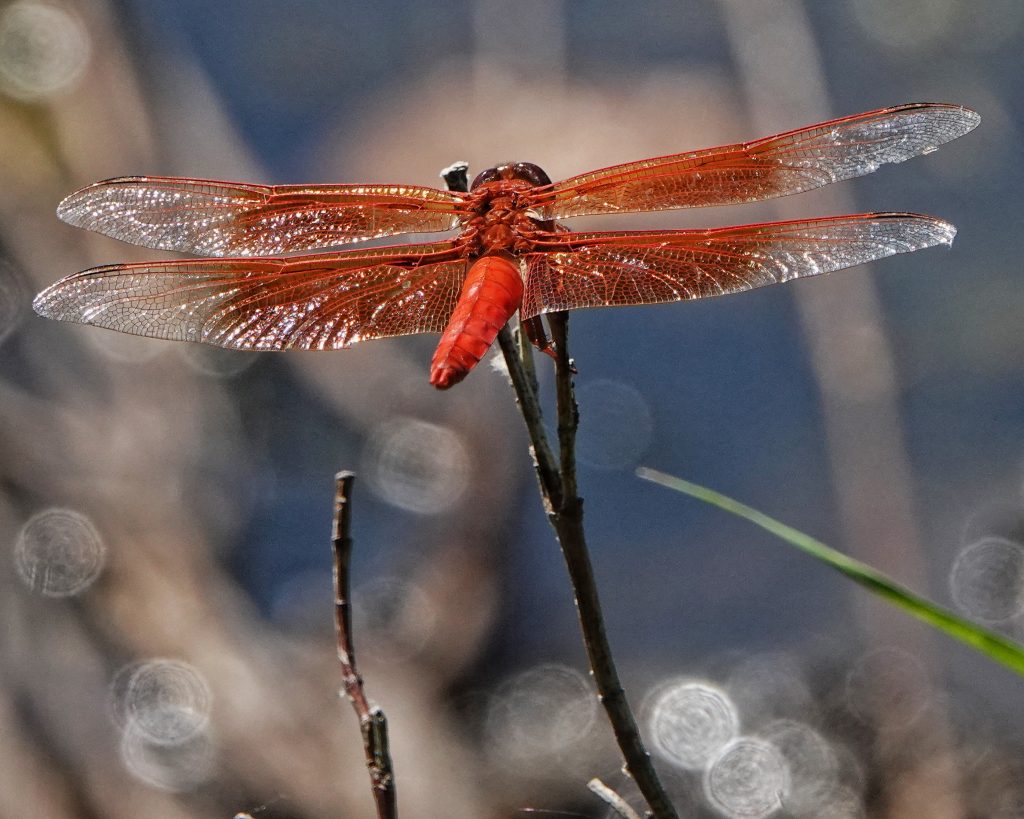
I have been remiss by never before talking about a few interesting dragonfly nymph facts. Their gills are located in their rectum, and they draw water in and expel water from this orifice. And they can forcefully eject that water with enough power to give themselves a form of jet propulsion. To capture prey they don’t initially utilize their forelegs. Instead they store energy by contracting their abdominal and thorax muscles, and when it is released it propels their labium (lower jaw) forward quite rapidly (63-87 milliseconds re. Kundanati et al,;2019). Members of the family Libellulidae like these Flame Skimmers have a spoon shaped labium with large palps that enclose their prey. Pretty wild stuff going on down on the bottom of the pond!
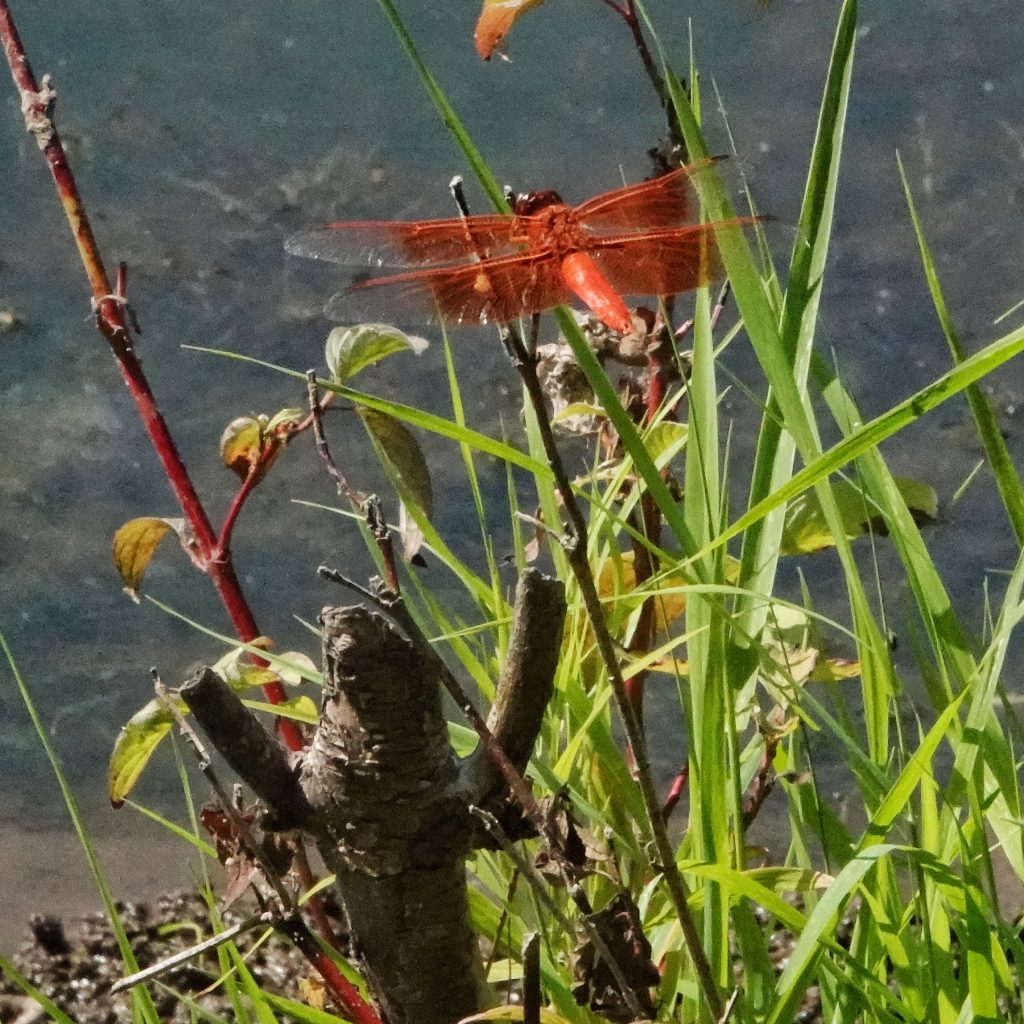
Description-Very large (52-60mm total length; wingspan 85-95mm) dragonfly with red orange/brown eyes, face, thorax, abdomen, legs, wing veins, and inner half of wings; females and immatures tend to be more brownish red while mature males tend to be bright red orange; females and immatures (and sometimes mature males) have a white to cream line from just behind the head, through the middle of the thorax and into the wing bases.
Similar species-There is really nothing in our region with which this can be confused, since those meadowhawks that are predominantly red are only half as long, and only seem to occupy about 1/4 as much space.
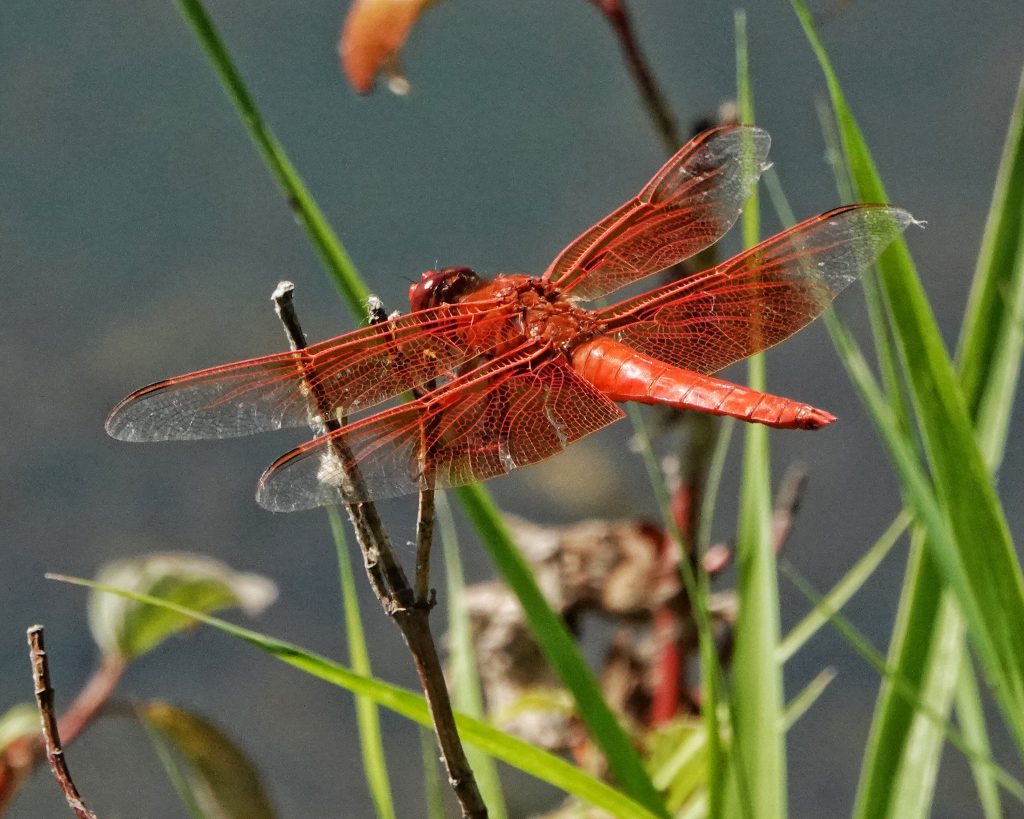
Habitat-Usually found in shallow, weedy ponds, lakes, and slow streams, especially waters that are warm, which in the PNW often means pools and ponds forming around hot springs, public fountains, and other man made water features; may be found far from water.
Range-Mexico and the western US; in our region it is found in s Idaho, se Oregon, the Willamette Valley, and now in Clark County, Washington.
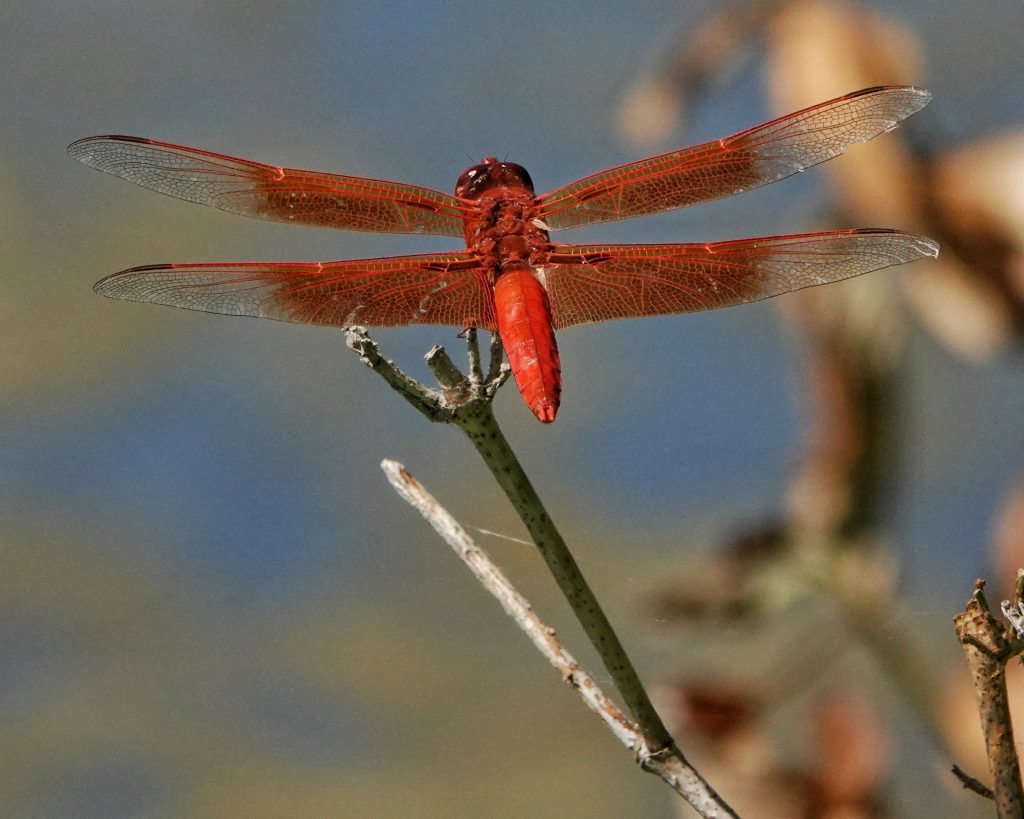
Eats-Nymphs are ambush hunters which will take almost anything they can catch and subdue, including mosquito and other aquatic fly larvae, mayfly larvae, aquatic hemipterans, freshwater shrimp, scuds, and other small crustaceans, and small tadpoles and fish, etc; adults usually hunt from a perch, and prey on soft bodied flying insects including a variety of dipterans, mayflies, caddisflies, lepidopterans, flying ants and termites, etc
Eaten by-Presumably any insectivore that can catch and subdue them.
Adults active-Mid May to mid October
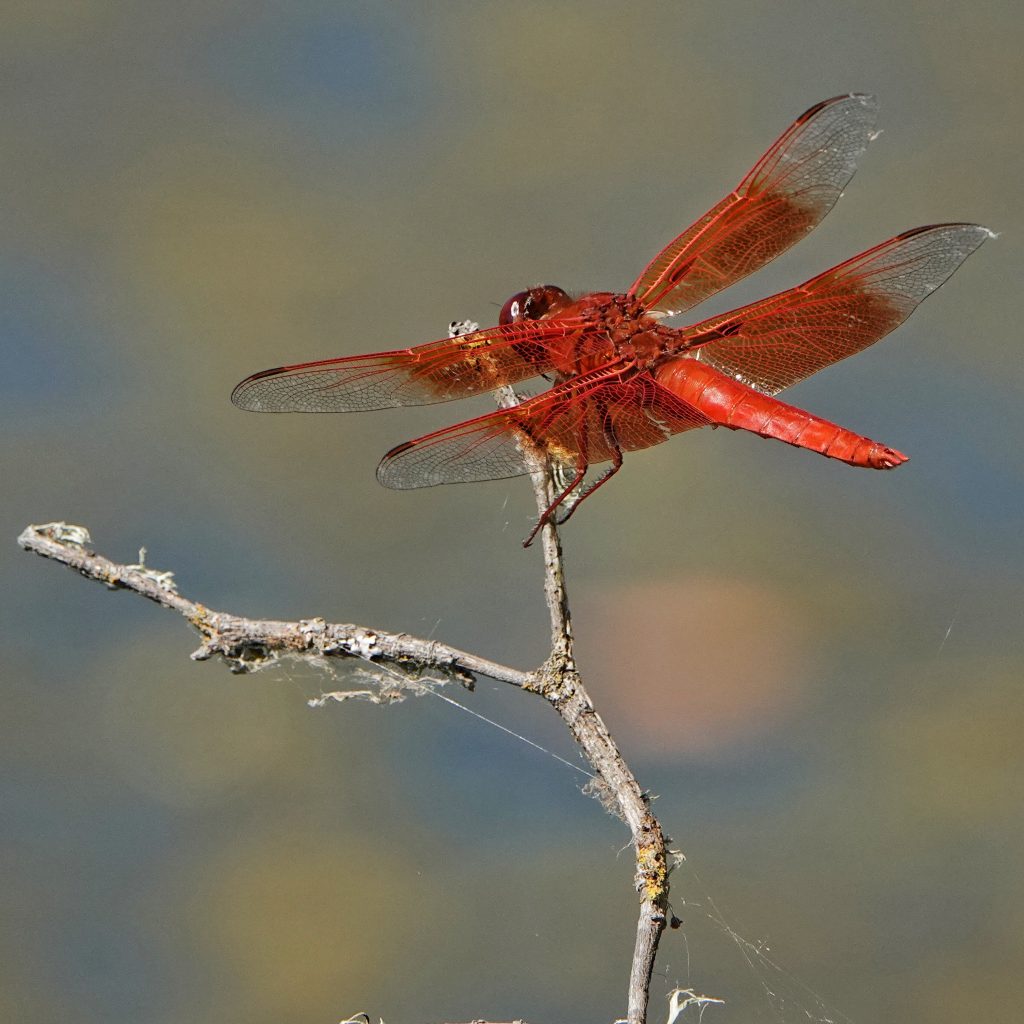
Life cycle-Oviposits by flicking (as much as 12”) eggs and water drops, often toward shore; larvae (usually called nymphs or naiads) bury themselves in soft mud and silt, and ambush prey from this cover; may exceed an inch in length, making it one of the largest skimmer nymphs in our region; usually emerges at night; appears to be univoltine in our region, with overwintering nymphs.
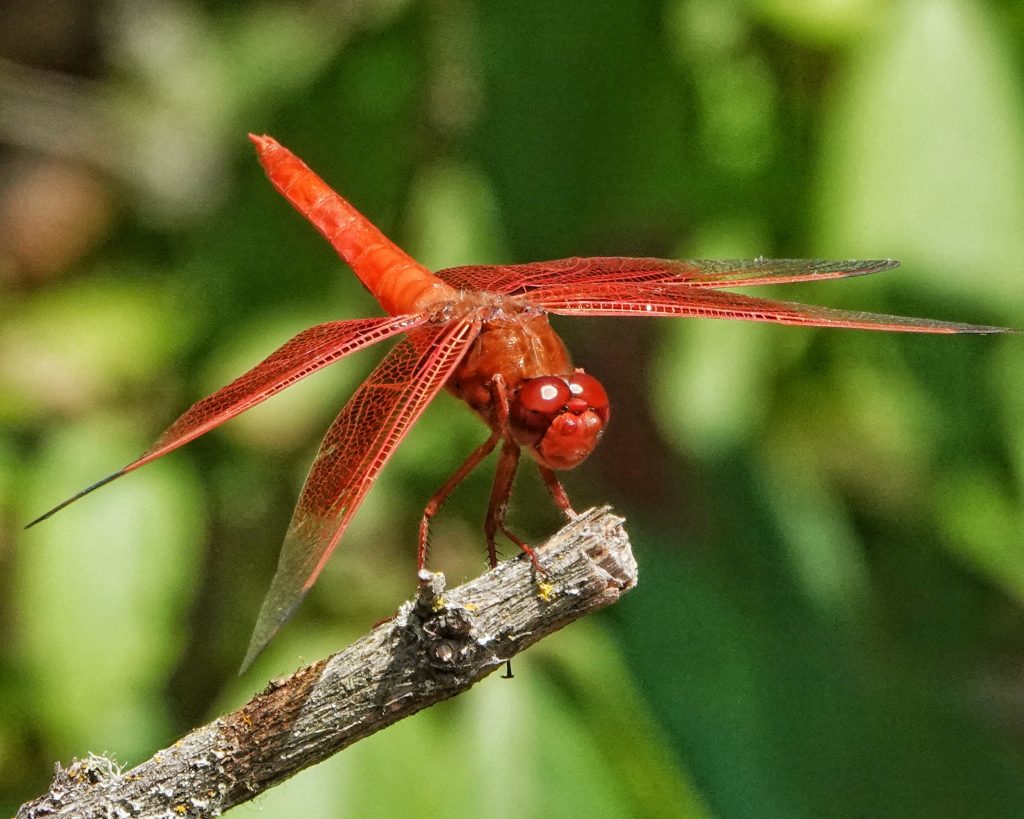
Etymology of names–Libellula comes from the Latin word for ‘little book’, and refers to the open wings being spread like the pages of a book. It was Linnaeus’ original generic Latin name for all dragonflies. The specific epithet saturata is from the Latin word for ‘filled’, and refers to these dragonflies (especially males) being saturated with red orange.
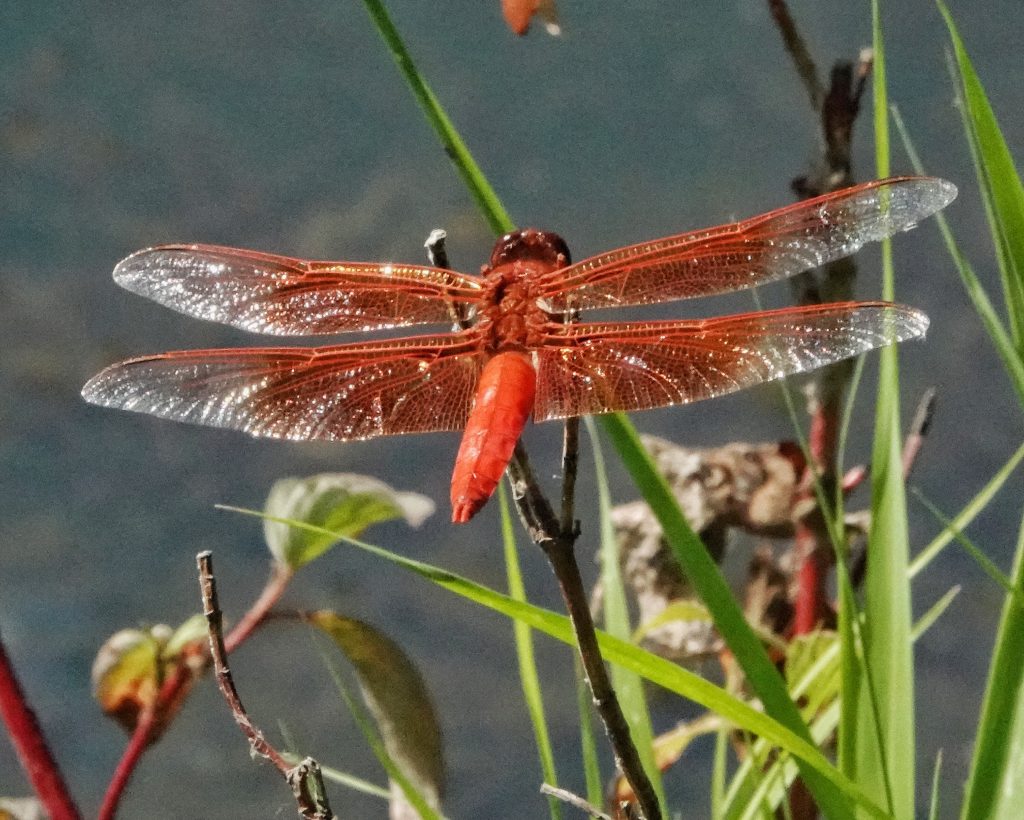
Flame skimmer (Libellula saturata) – JungleDragon
Species Libellula saturata – Flame Skimmer – BugGuide.Net
http://mother-natures-backyard.blogspot.com/2017/05/flame-skimmer-dragonfly-libellula.html
https://natuurtijdschriften.nl/pub/592055/OJIOS1993022004003.pdf
https://natuurtijdschriften.nl/pub/591858/OJIOS1989018001009.pdf
https://www.biorxiv.org/content/10.1101/536805v1.full.pdf
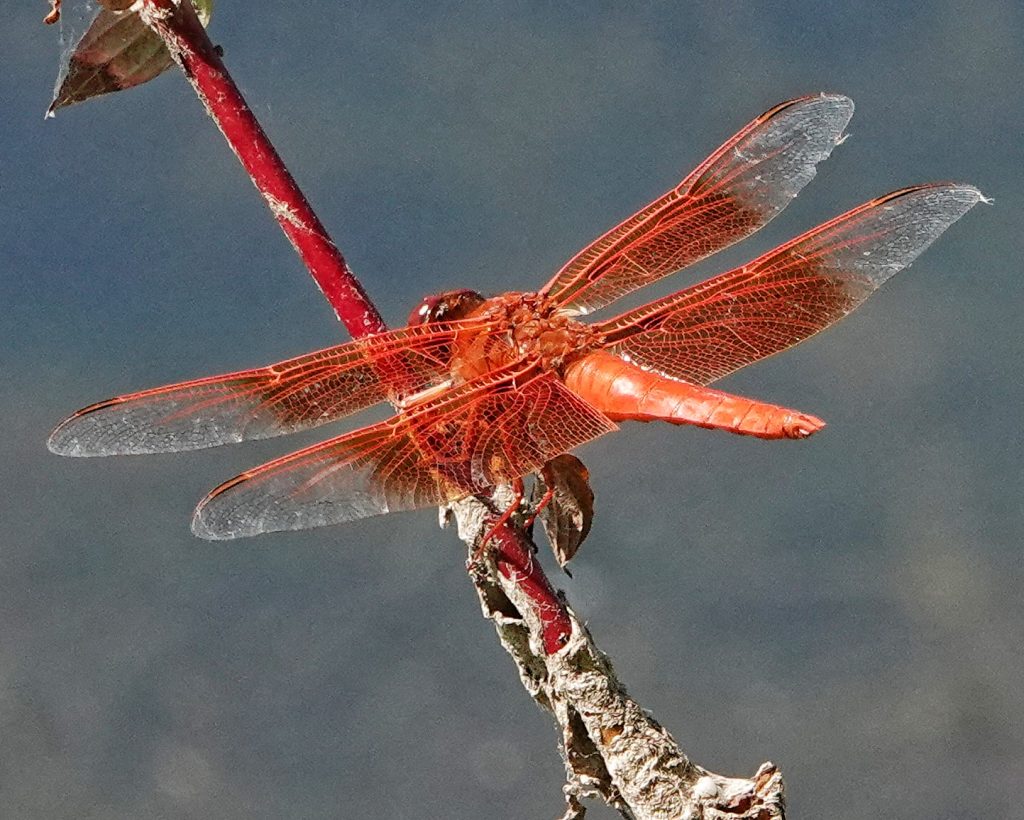
Very interesting! By the way, I’m not sure why you tag many of your animal profiles with “Plants”. If you go to Species Profiles, and choose plants, about half of the profiles are not profiles of plants.
Thanks! There is a glitch that automatically tags plants whenever I tag species profile. About half the time I remember to uncheck it🤦🏻♂️